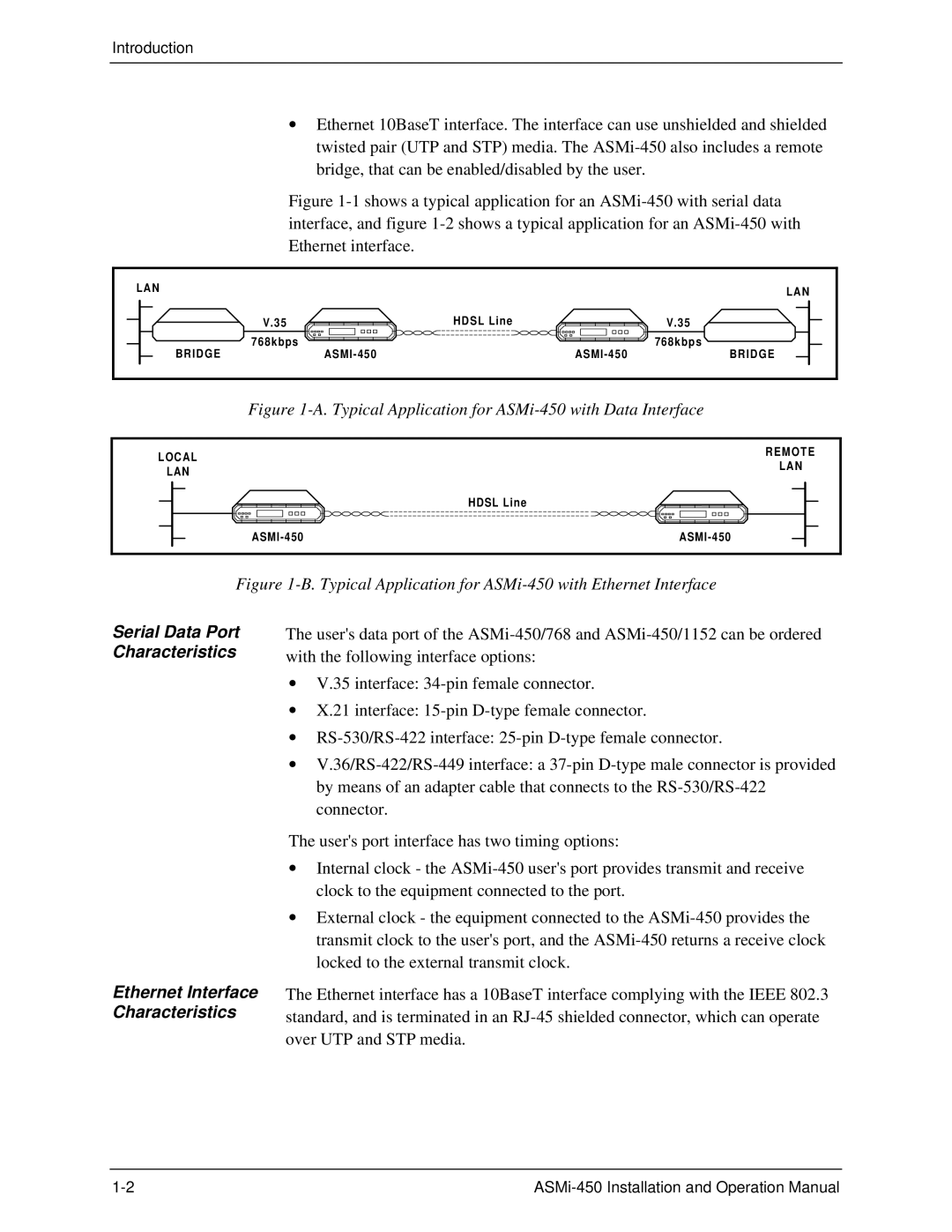
Introduction
∙Ethernet 10BaseT interface. The interface can use unshielded and shielded twisted pair (UTP and STP) media. The
Figure 1-1 shows a typical application for an ASMi-450 with serial data interface, and figure 1-2 shows a typical application for an ASMi-450 with Ethernet interface.
LAN |
|
| LAN |
|
|
| |
| V.35 | HDSL Line | V.35 |
BRIDGE | 768kbps | 768kbps | |
BRIDGE |
Figure 1-A. Typical Application for ASMi-450 with Data Interface
LOCAL | REMOTE | |
LAN | ||
LAN | ||
| ||
| HDSL Line | |
Figure 1-B. Typical Application for ASMi-450 with Ethernet Interface
Serial Data Port Characteristics
Ethernet Interface Characteristics
The user's data port of the
∙V.35 interface:
∙X.21 interface:
∙
∙
The user's port interface has two timing options:
∙Internal clock - the
∙External clock - the equipment connected to the
The Ethernet interface has a 10BaseT interface complying with the IEEE 802.3 standard, and is terminated in an
